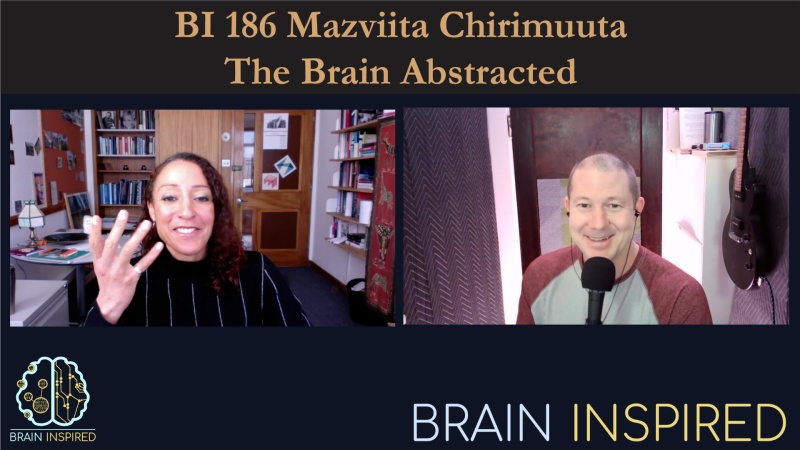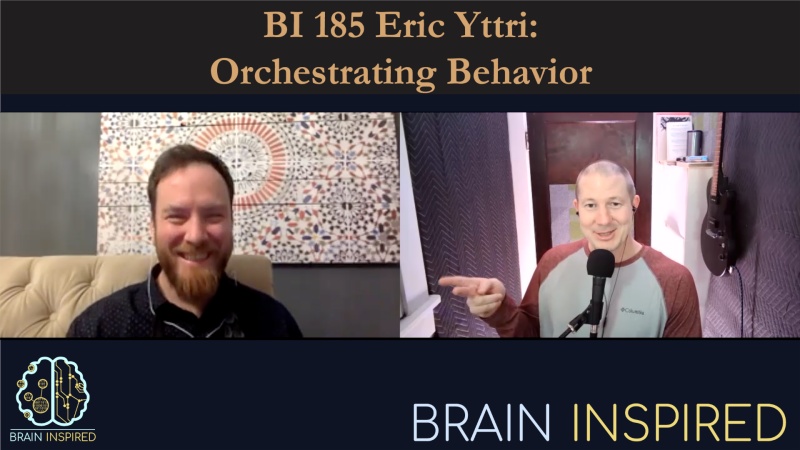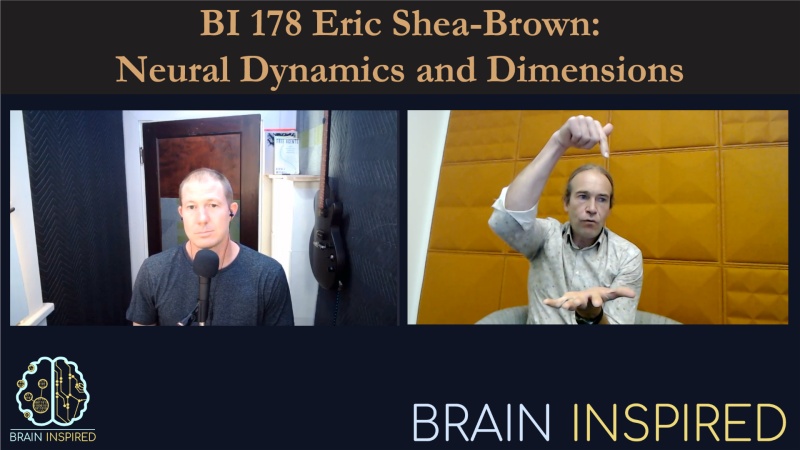
BI 187: COSYNE 2024 Neuro-AI Panel

Recently I was invited to moderate a panel at the annual Computational and Systems Neuroscience, or COSYNE, conference. This year was the 20th anniversary of COSYNE, and we were in Lisbon Porturgal.


Recently I was invited to moderate a panel at the annual Computational and Systems Neuroscience, or COSYNE, conference. This year was the 20th anniversary of COSYNE, and we were in Lisbon Porturgal.


Mazviita Chirimuuta is a philosopher at the University of Edinburgh. Today we discuss topics from her new book, The Brain Abstracted: Simplification in the History and Philosophy of Neuroscience.


Eric’s lab studies the relationship between various kinds of behaviors and the neural activity in a few areas known to be involved in enacting and shaping those behaviors, namely the motor cortex and basal ganglia. And study that, he uses tools like optogentics, neuronal recordings, and stimulations, while mice perform certain tasks, or, in my case, while they freely behave wandering around an enclosed space.


What Pete argues for is what he calls a sideways-in approach. So a bottom-up approach is to build things like we find them in the brain, put them together, and voila, we’ll get cognition. A top-down approach, the current approach in AI, is to train a system to perform a task, give it some algorithms to run, and fiddle with the architecture and lower level details until you pass your favorite benchmark test.


You may know my guest as the co-founder of Neuromatch, the excellent online computational neuroscience academy, or as the creator of the Brian spiking neural network simulator, which is freely available. I know him as a spiking neural network practitioner extraordinaire. Dan Goodman runs the Neural Reckoning Group at Imperial College London, where they use spiking neural networks to figure out how biological and artificial brains reckon, or compute.


John Krakauer has been on the podcast multiple times (see links below). Today we discuss some topics framed around what he’s been working on and thinking about lately.


By day, Max Bennett is an entrepreneur. He has cofounded and CEO’d multiple AI and technology companies. By many other countless hours, he has studied brain related sciences. Those long hours of research have payed off in the form of this book, A Brief History of Intelligence: Evolution, AI, and the Five Breakthroughs That Made Our Brains.




Laura Gradowski is a philosopher of science at the University of Pittsburgh. Pluralism, or scientific pluralism anyway, is roughly the idea that there is no unified account of any scientific field, that we should be tolerant of and welcome a variety of theoretical and conceptual frameworks, and methods, and goals, when doing science. Pluralism is kind of a buzz word right now in my little neuroscience world, but it’s an old and well-trodden notion… many philosophers have been calling for pluralism for many years. But how pluralistic should we be in our studies and explanations in science? Laura suggests we should be very, very pluralistic, and to make her case, she cites examples in the history of science of theories and theorists that were once considered “fringe” but went on to become mainstream accepted theoretical frameworks. I thought it would be fun to have her on to share her ideas about fringe theories, mainstream theories, pluralism, etc.


Eric Shea-Brown is a theoretical neuroscientist and principle investigator of the working group on neural dynamics at the University of Washington. In this episode, we talk a lot about dynamics and dimensionality in neural networks… how to think about them, why they matter, how Eric’s perspectives have changed through his career.